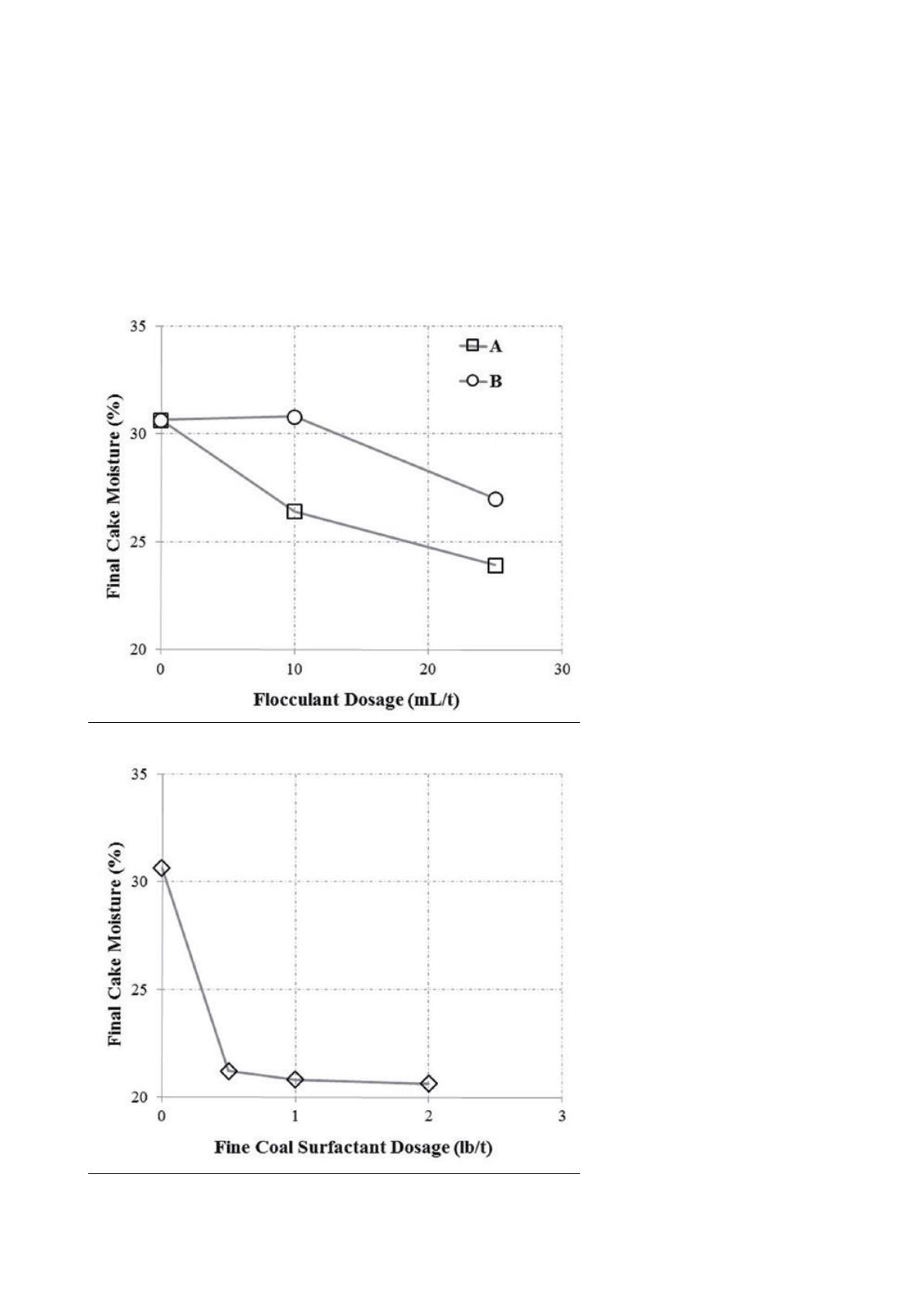
be used in some instances to
increase efficiency. In this article,
they will discuss common
challenges in the fine coal circuit
and highlight examples of enhanced
performance with chemical
solutions – and review frequently
overlooked opportunities for the
coarse circuit.
Challenges in fine circuit
Excessive product moisture
Vacuum filters are commonly used to
dewater a wide range of fine sizes,
typically -28 mesh. In the presence of
ultra-fines, i.e. -325 mesh size material,
final cake moisture may increase and
operational issues, such as filter cloth
blinding and deteriorated effluent
quality, may emerge. To compensate
for excessive moisture, operators may
take counter-productive measures,
such as directing a portion of the clean
coal slurry to waste or circulating it
back through the circuit. Sometimes,
the approach may even be to
purposefully sacrifice flotation
recovery to send less material to the
filters. In some cases, these issues can
be addressed by use of proper
dewatering aids, such as flocculants
and surfactants, which alter the cake
characteristics and enhance the
mechanical filtration efficiency by
increasing kinetics.
In a few words, filtration kinetics
can be defined as the volumetric flow
rate of the liquid through a media, as
described by Darcy’s Law. The flow
rate is affected by several parameters
and can be chemically altered. For
instance, flocculants work by creating
large agglomerates that increase
capillary size and allow water to drain
more freely. Surfactants, on the other
hand, increase the hydrophobicity of
the coal surface, again leading to
improved drainage.
To demonstrate the effects of
flocculant and surfactant chemicals on
fine coal filtration performance, a
series of field tests were conducted at a
US-based preparation facility. Two
Nalco flocculants (A and B) were
tested, both of which were prepared as
1% solutions with plant makeup water.
Each flocculant was tested at an
addition rate of 10 and 25 ml/t, dosed
to the flotation launders. The slurry
had approximately 26% -325 mesh
material. Data was collected from a
disc filter operating at 18 in Hg, with a
20 mm cake thickness and 2 min. cycle
time. As shown in Figure 1, both
flocculant types were successful in
decreasing the cake moisture at low
dosages, with flocculant A being
effective at even a lower dosage.
During the tests, it was also observed
that the cake formation time is
substantially decreased with the
addition of either flocculant. This side
benefit of chemical aids can be
leveraged to increase filter throughput
or achieve additional moisture
reduction.
Figure 2. Effects of using a fine coal surfactant on cake moisture (%).
Figure 1. Effects of using flocculants on cake moisture (%).
70
|
World Coal
|
March 2016


